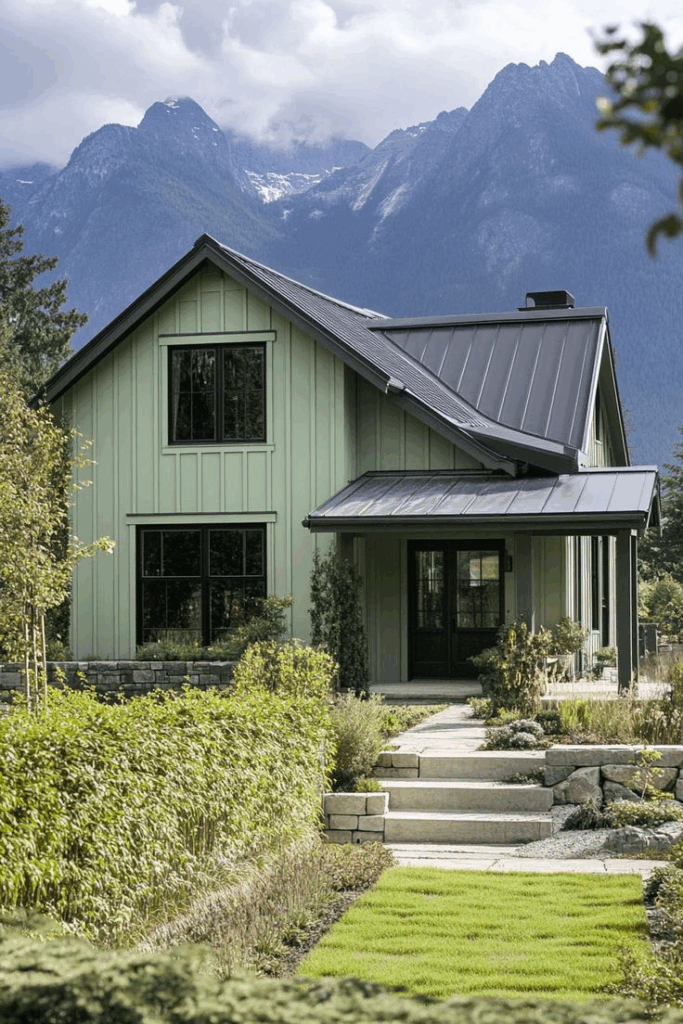
When it comes to exterior home improvements, few choices are as impactful—or as long-lasting—as the siding material you select. The right siding not only enhances curb appeal but also protects your home from the elements, improves energy efficiency, and boosts property value. With several types of siding available today, it’s important to understand the pros and cons of each to make the best decision for your home.
In this guide, we’ll compare five of the most popular siding materials—vinyl, wood, fiber cement, metal, and engineered wood—to help you choose the right one based on your budget, style preferences, and climate.
1. Vinyl Siding: Affordable and Low Maintenance
Vinyl siding remains the most commonly used siding material in the U.S., and for good reason. It’s cost-effective, widely available, and comes in a variety of colors and styles.
Pros:
- Affordable and budget-friendly
- Minimal maintenance (no painting required)
- Resistant to moisture and pests
- Easy to install
Cons:
- Can crack or warp in extreme weather
- May fade over time
- Limited lifespan compared to higher-end options
Best For: Homeowners on a budget, rental properties, or those seeking a quick curb appeal upgrade with minimal upkeep.
SEO Tip: Target keywords like “is vinyl siding worth it,” “vinyl siding pros and cons,” and “best budget siding materials.”
2. Wood Siding: Classic Charm with Natural Beauty
Wood siding, such as cedar or redwood, offers a timeless, rustic appeal that’s hard to replicate. It can be installed as clapboard, shingles, or board-and-batten.
Pros:
- Natural, warm appearance
- Can be stained or painted in any color
- Renewable and eco-friendly (if sustainably sourced)
Cons:
- Requires regular maintenance (painting, staining, sealing)
- Vulnerable to termites, rot, and moisture
- Higher long-term costs due to upkeep
Best For: Historic homes, cottages, or homeowners who value aesthetics and don’t mind ongoing maintenance.
3. Fiber Cement Siding: Durable and Versatile
Fiber cement siding, often associated with brands like James Hardie®, is made from a mixture of cement, sand, and cellulose fibers. It mimics the look of wood or stucco while offering superior durability.
Pros:
- Fire- and insect-resistant
- Extremely durable (lasts 30–50 years)
- Can replicate wood or masonry finishes
- Holds paint well
Cons:
- Heavier than other siding types (requires skilled installation)
- Higher upfront cost
- Can absorb moisture if not properly installed
Best For: Homeowners looking for a long-lasting, low-maintenance siding with a high-end appearance
.
SEO Tip: Use search phrases like “fiber cement siding vs vinyl,” “James Hardie siding benefits,” and “best durable siding options.”
4. Metal Siding: Modern, Sleek, and Fire-Resistant
Metal siding, typically aluminum or steel, is growing in popularity for contemporary homes. It’s sleek, recyclable, and especially useful in areas prone to wildfires or severe weather.
Pros:
- Non-combustible and weather-resistant
- Low maintenance
- Resistant to insects and mold
- Can last 40+ years
Cons:
- Can dent (especially aluminum)
- May rust if scratched or poorly coated
- Limited design options compared to wood or fiber cement
Best For: Modern homes, commercial properties, or homes in wildfire-prone or coastal regions.
5. Engineered Wood Siding: The Look of Wood Without the Hassle
Engineered wood siding is made from wood fibers combined with resins and treated for added durability. It mimics the appearance of real wood but requires far less maintenance.
Pros:
- More affordable than natural wood
- Resists rot, pests, and weather damage
- Easier to install and maintain
- Available in prefinished colors
Cons:
- Still requires periodic painting or sealing
- Not as naturally textured as real wood
- Less fire-resistant than fiber cement or metal
Best For: Homeowners who love the look of wood but want a more cost-effective and durable solution.
How to Choose the Best Siding Material for Your Home

When deciding on the right siding, consider the following factors:
- Budget: Vinyl and engineered wood are the most cost-effective; fiber cement and metal tend to be pricier.
- Climate: In humid or termite-prone areas, avoid untreated wood. In fire-prone zones, consider metal or fiber cement.
- Maintenance: If you prefer a “set it and forget it” approach, vinyl or metal may be best.
- Aesthetic: Think about your home’s architectural style. Wood fits traditional homes, while metal and fiber cement suit modern designs.
Final Thoughts
Choosing the right siding material can dramatically impact your home’s appearance, energy efficiency, and resale value. Each option has its unique strengths and trade-offs, so take the time to evaluate your needs before investing.
With a well-informed decision, your new siding will not only protect your home but also enhance its curb appeal for years to come.

Tinggalkan Balasan